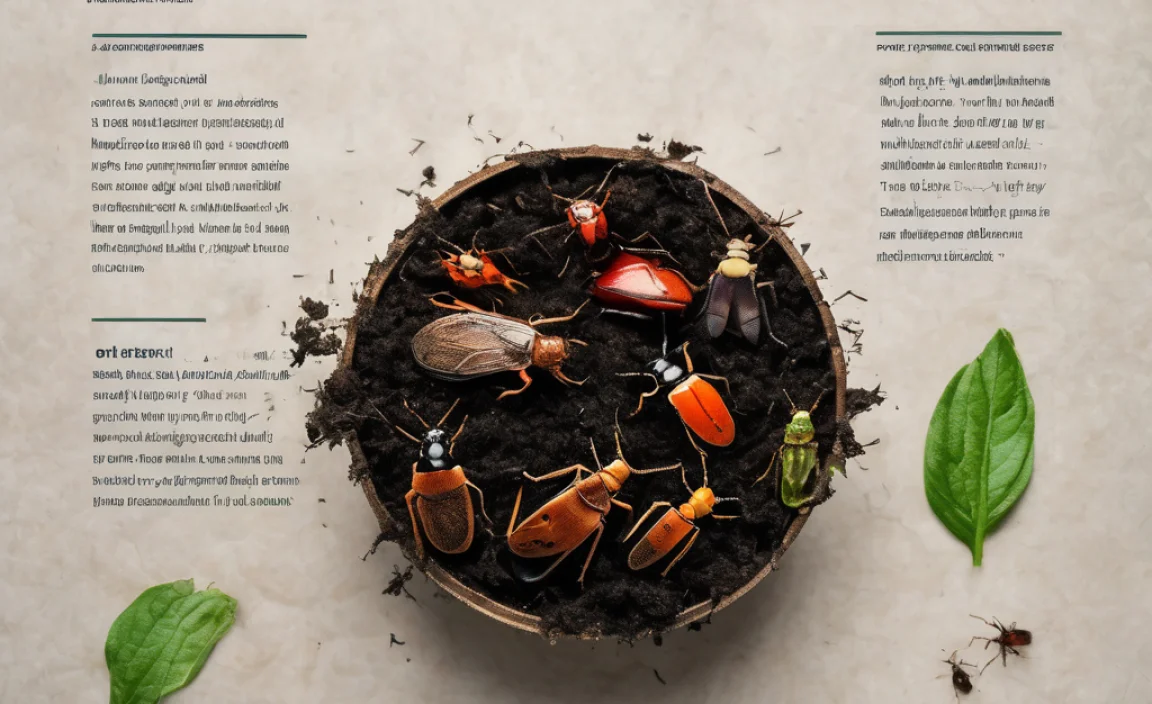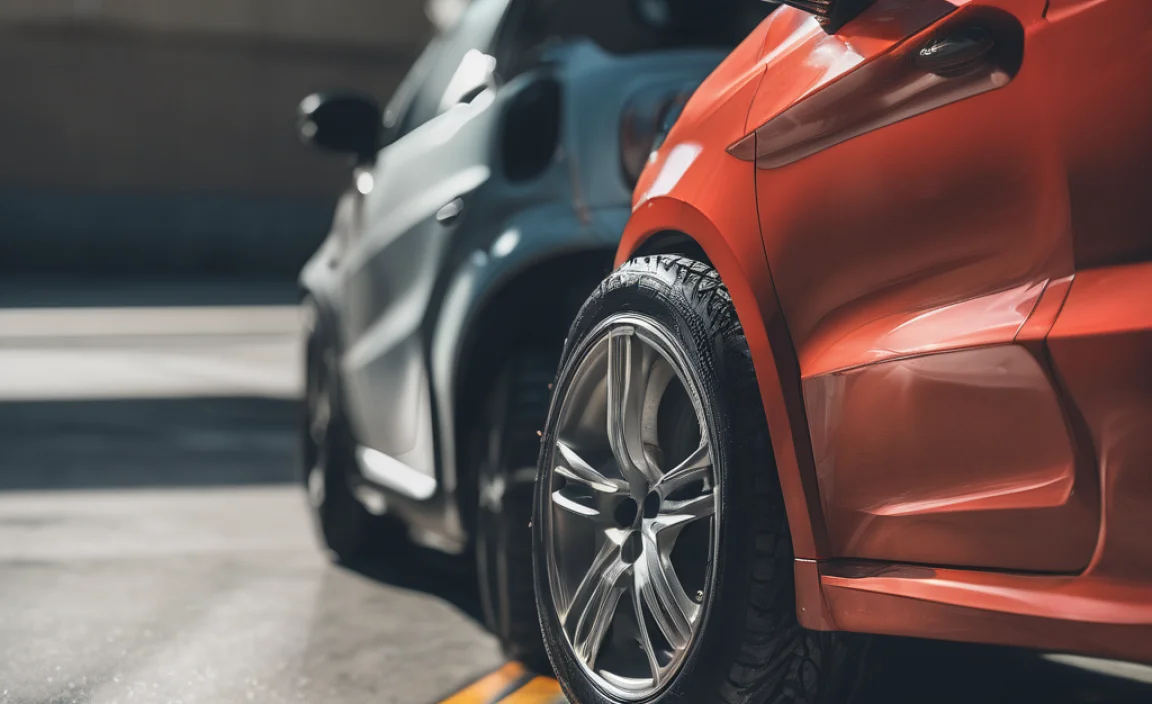Ever stared at those bags in the garden center, wondering what’s what for your precious plants? It’s easy to get confused between compost and fertilizer. They both help your garden grow, but they do it in different ways. We’re going to break down these two garden helpers so you can pick the best one for your needs. Stick with me, and we’ll get your garden thriving!
Compost vs Fertilizer Difference: An Essential Guide for Happy Plants
Hey there, garden friends! Troy D Harn here from TopChooser, ready to help you figure out what’s really going on in your soil. You’ve probably seen terms like “compost” and “fertilizer” thrown around. They sound similar, and they both aim to boost your plant’s health, but they’re actually quite different. If you’ve ever felt a bit lost trying to decide which one to use, you’re in the right spot. We’ll explore the compost vs fertilizer difference in a way that makes sense, so you can confidently give your plants exactly what they need.
Think of it like this: your plants need food, but they also need a healthy home to live in. Compost is like building a cozy, nutritious home for your plants, while fertilizer is more like a quick energy drink. Both have their place! We’ll cover what each one is, how they work, their pros and cons, and when to choose which. By the end, you’ll be a compost and fertilizer pro, ready to make informed decisions for your best garden yet.
Understanding Compost: The Soil’s Best Friend
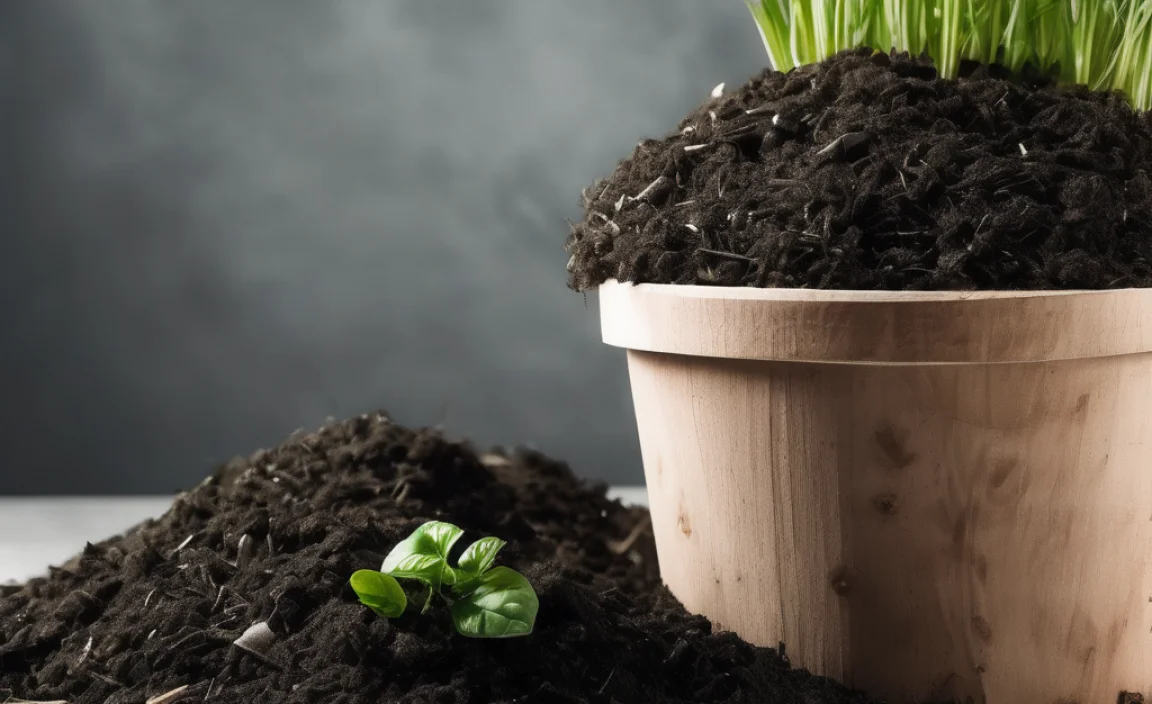
So, what exactly is compost? Simply put, compost is decomposed organic material. This means things like kitchen scraps (vegetable peels, coffee grounds), yard waste (leaves, grass clippings), and other natural bits have been broken down by tiny helpers like bacteria, fungi, and insects. The result is a dark, crumbly, nutrient-rich material often called “black gold” by gardeners, and for good reason!
Compost isn’t just about feeding your plants directly. Its main superpower is improving the overall health and structure of your soil. It acts like a super sponge, holding moisture and nutrients that plants can slowly access. It also helps loosen heavy clay soils and bind sandy soils together, making it easier for plant roots to grow and breathe.
How Compost Works Its Magic
The magic of compost lies in its slow-release nature and its ability to improve soil structure. When you add compost to your garden:
- Improves Soil Structure: It helps clumpy clay soil become looser and more workable. For sandy soils, it helps them hold onto water and nutrients better.
- Boosts Soil Life: Compost is teeming with beneficial microorganisms that enrich your soil and help break down organic matter further, making nutrients available to plants.
- Water Retention: It acts like a sponge, helping your soil soak up and hold more water. This means you might need to water less often, which is a win-win!
- Slow Nutrient Release: While compost does contain nutrients, they are released slowly over time as the organic matter continues to break down. This provides a steady, gentle food source for your plants, preventing nutrient burn.
- pH Balancer: Compost can help buffer the soil pH, bringing it closer to a neutral range that most plants prefer.
Think of adding compost as a long-term investment in your garden’s health. It builds a better foundation for everything you grow.
Understanding Fertilizer: The Quick Boost
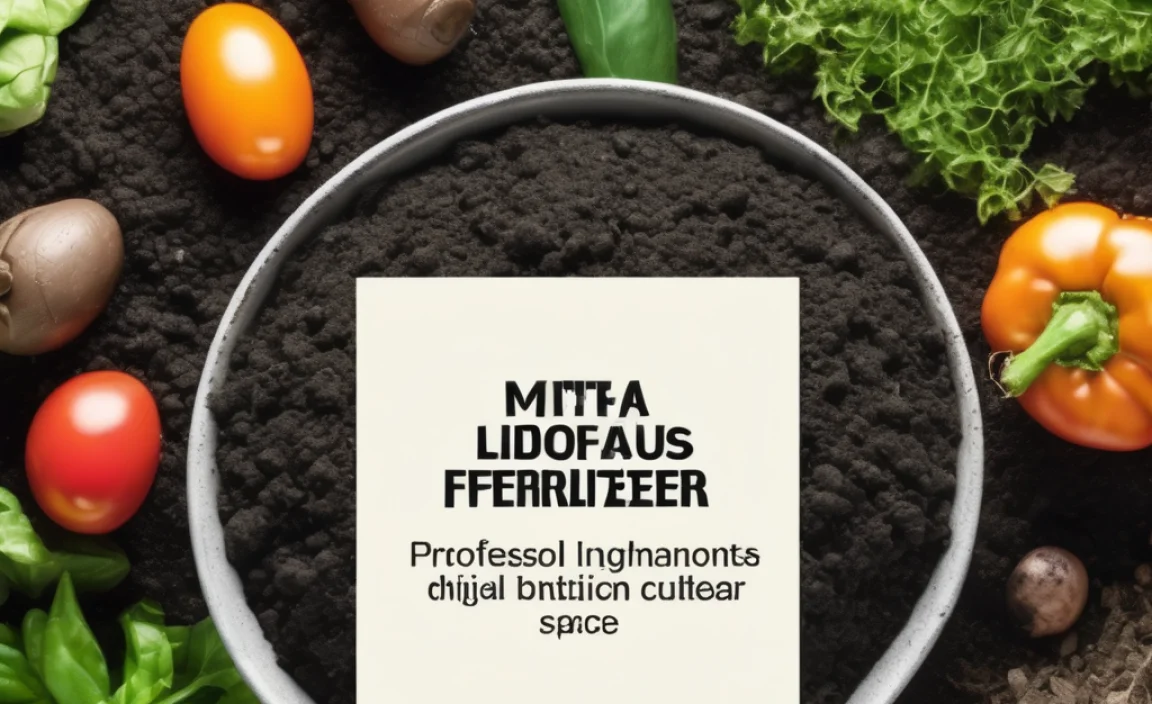
Now, let’s talk about fertilizer. Fertilizers are typically synthetic or naturally derived substances that provide concentrated nutrients to plants. They are designed to give plants a quick hit of specific elements they need to grow, bloom, or produce fruit. The key difference from compost is that fertilizers are primarily about delivering these essential nutrients, rather than fundamentally changing the soil’s physical properties.
You’ll often see fertilizers measured by something called the N-P-K ratio. This tells you the percentage of Nitrogen (N), Phosphorus (P), and Potassium (K) in the bag. These are the three “macronutrients” that plants need in the largest amounts.
How Fertilizer Works Its Magic
Fertilizers work by providing readily available nutrients that plants can absorb very quickly through their roots. This is why they are often referred to as a “quick fix” or a “meal replacement” for plants.
- Rapid Nutrient Delivery: Nutrients in fertilizers are typically in a soluble form, meaning plants can take them up almost immediately.
- Targeted Nutrition: Fertilizers can be formulated with specific N-P-K ratios or added micronutrients to address particular plant needs, like flowering or fruiting.
- Fast Results: You often see a visible difference in plant growth, leaf color, or flower production relatively quickly after applying fertilizer.
- Concentrated Nutrients: They deliver a high concentration of specific nutrients, which can be very beneficial when a plant is deficient or needs a rapid boost.
However, it’s important to use fertilizers carefully. Too much can “burn” plant roots or leaves, and because the nutrients are so readily available, they can also be easily washed away by rain or watering, potentially polluting waterways if not managed properly. You can learn more about responsible fertilizer use from resources like the Environmental Protection Agency (EPA).
Compost vs Fertilizer: Key Differences at a Glance
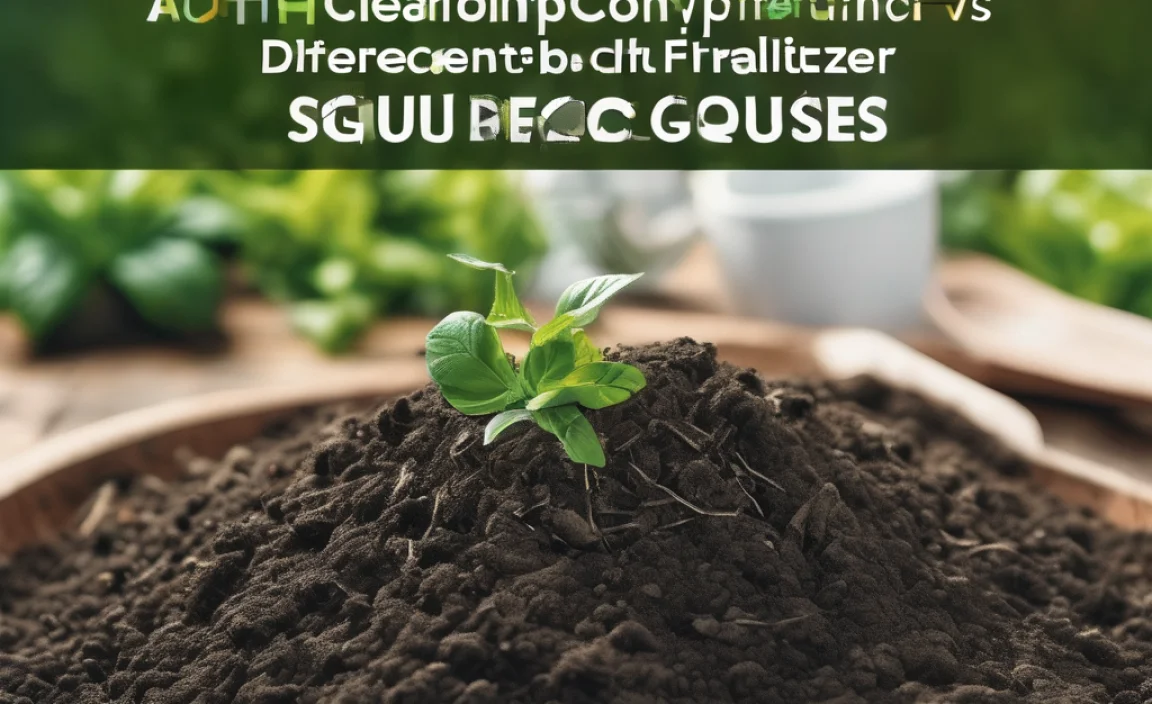
Let’s put the compost vs fertilizer difference side-by-side to make it crystal clear. They both contribute to plant health, but their roles are distinct.
Here’s a table that breaks down the core differences:
| Feature | Compost | Fertilizer |
|---|---|---|
| Primary Role | Improves soil structure, fertility, and health. | Provides concentrated, readily available nutrients. |
| Source | Decomposed organic matter (kitchen/yard waste). | Synthetic chemicals or natural minerals/organics. |
| Nutrient Delivery | Slow and steady, released as it continues to break down. | Fast and immediate, easily absorbed by plants. |
| Effect on Soil | Builds healthy soil ecosystem, improves texture, water retention. | Primarily adds nutrients; can have minimal impact on soil structure. |
| Risk of Overuse | Low; difficult to “over-apply” and generally beneficial. | High; can cause nutrient burn, harm soil life, and pollute. |
| Time to See Results | Gradual, long-term improvement in plant health and soil. | Quick visual improvement in plant growth or color. |
| Cost | Can be free if you make it yourself; purchased compost varies. | Varies widely based on type and concentration. |
Pros and Cons of Compost
Let’s weigh the good and the not-so-good of using compost.
Pros:
- Builds Healthy Soil: The best way to create a thriving garden ecosystem from the ground up.
- Environmentally Friendly: Reduces waste by recycling organic materials.
- Improves Water Management: Helps soil retain moisture, reducing watering needs and runoff.
- Safe for Plants: Low risk of burning plants, even if you add a bit extra.
- Cost-Effective: Can be very cheap or free if you compost at home.
- Supports Beneficial Organisms: Feeds earthworms and microbes that keep soil healthy.
Cons:
- Nutrient Levels Vary: The exact nutrient content can be unpredictable.
- Slower Results: Don’t expect dramatic, immediate changes in plant appearance.
- Can Be Bulky: Transporting and spreading large quantities can be labor-intensive.
- Potential for Weed Seeds/Pathogens: If not composted at high enough temperatures, can introduce unwanted guests (though this is less common with properly managed hot composting).
Pros and Cons of Fertilizer
Now, let’s look at the upsides and downsides of using fertilizers.
Pros:
- Fast Acting: Great for giving plants a quick boost when they show signs of deficiency.
- Targeted Nutrients: Can address specific nutrient needs for different plants or growth stages.
- Convenient: Easy to measure, apply, and store.
- Predictable Results: The N-P-K ratio provides a reliable nutrient content.
- Can Address Severe Deficiencies: Essential for correcting critical nutrient shortages quickly.
Cons:
- Risk of Over-application: Can easily burn plants, leading to root damage or leaf scorch.
- Environmental Impact: Overuse can lead to nutrient runoff, polluting water bodies and potentially causing algal blooms. Seek guidance from resources like USDA’s National Agricultural Library on best practices.
- Doesn’t Improve Soil Structure: Adds nutrients but doesn’t build a healthy soil ecosystem.
- Can Be Costly: Especially for specialized or organic formulations.
- Salt Buildup: Some synthetic fertilizers can lead to salt accumulation in the soil over time.
When to Use Compost
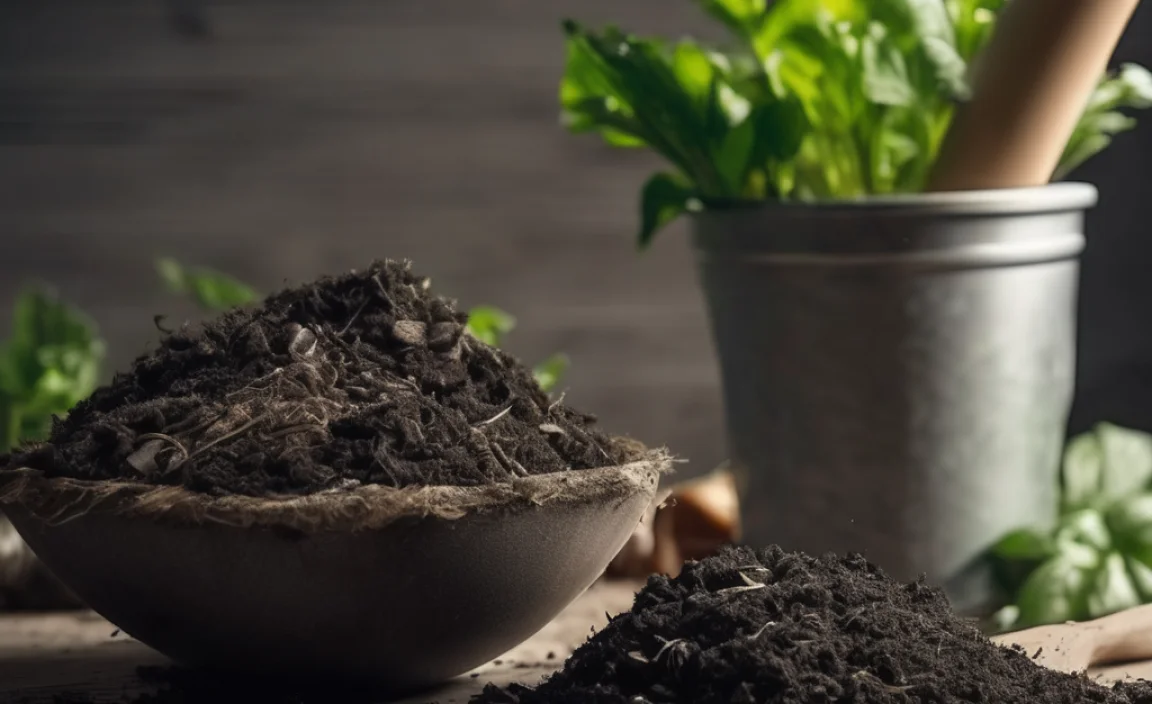
Compost is an all-around garden superhero. It’s fantastic for:
- Building New Garden Beds: Mix a generous amount into the soil before planting.
- Amending Existing Soil Annually: Spread a layer on top of your garden beds every spring or fall to continuously improve soil health.
- Planting Trees and Shrubs: Mix compost into the planting hole to give them a great start.
- Top Dressing Lawns: Rake a thin layer over your lawn to improve its health and resilience.
- Container Gardening: Use it as a key ingredient in your potting mix for healthier container plants.
- General Soil Improvement: If your soil is compacted, drains poorly, or doesn’t hold moisture well, compost is your go-to solution.
Basically, if you want to improve your soil’s long-term health, fertility, and structure, compost is the way to go. It’s the foundation for a truly sustainable and thriving garden.
When to Use Fertilizer
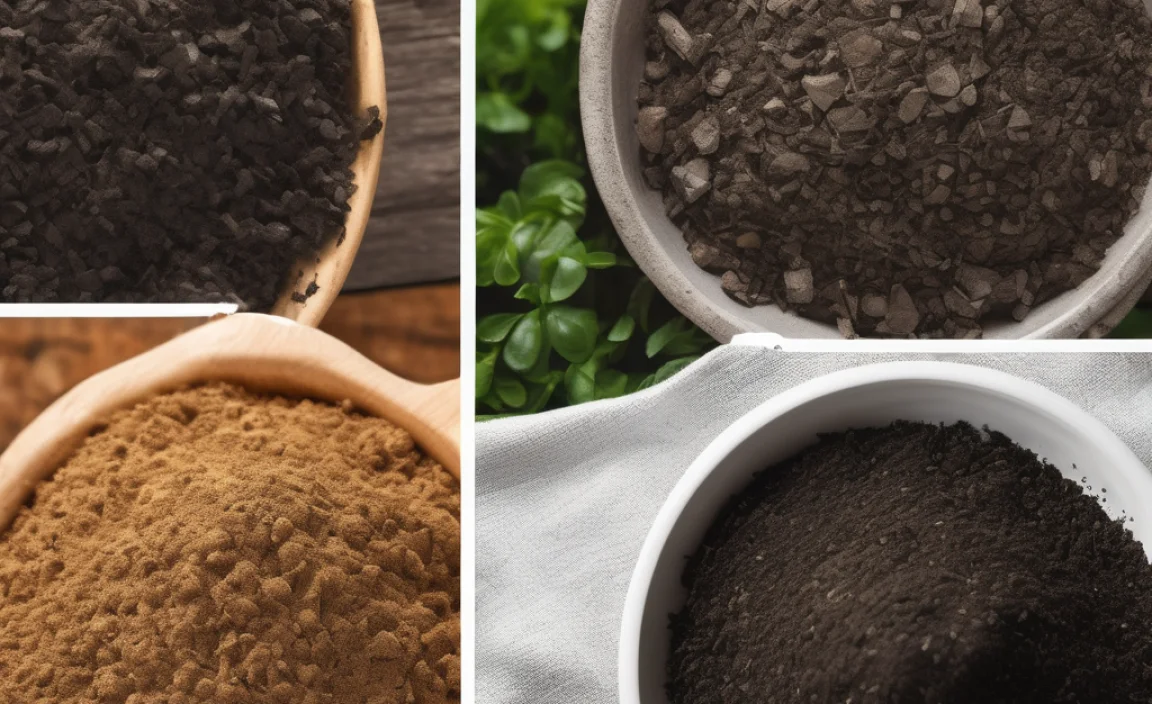
Fertilizer shines when you need a targeted boost or a quick fix. Consider fertilizer for:
- Addressing Visible Deficiencies: If your plants have yellowing leaves (a sign of nitrogen deficiency) or stunted growth, fertilizer can help quickly.
- Specific Plant Needs: Some plants, like heavy feeders (tomatoes, roses) or flowering/fruiting plants, might benefit from supplemental fertilizer at certain stages of growth.
- Quick Greening of Lawns: For a rapid boost in lawn color and growth, especially before an event.
- Boosting Blooms or Fruit Production: Fertilizers higher in phosphorus and potassium can encourage more flowers and fruit.
- Starting Seeds in Poor Soil: If you’re starting seeds in a potting mix that lacks nutrients or in very depleted soil, a gentle fertilizer can help.
It’s crucial to choose the right fertilizer for the job. Look at that N-P-K ratio. For leafy growth, a higher first number (Nitrogen) is good. For flowering and fruiting, a higher middle (Phosphorus) and last number (Potassium) can be beneficial. Always follow the package directions carefully to avoid overuse.
Compost vs Fertilizer: The Best of Both Worlds
The truth is, you don’t always have to choose between compost and fertilizer. For many gardeners, the ideal approach is to use both! They complement each other beautifully.
Think of compost as your garden’s staple diet – it provides the essential building blocks and a healthy environment. Fertilizer is like a vitamin supplement – it’s used when needed to target specific deficiencies or boost performance during demanding times.
A good strategy is to build healthy soil with compost year after year. This reduces your reliance on chemical fertilizers. Then, use fertilizers judiciously to give specific plants or your garden a needed lift when appropriate. This balanced approach supports both the long-term health of your soil and the immediate vitality of your plants.
How to Make Your Own Compost
Want to save money and have an endless supply of “black gold”? Making your own compost is easier than you might think! Here’s a beginner-friendly rundown:
- Choose a Spot and Bin: Find a convenient, well-drained spot in your yard. You can use a simple pile or a store-bought or DIY bin. Many bins are available designed for easy turning and aeration.
- Gather Your Ingredients: You need a mix of “greens” (nitrogen-rich) and “browns” (carbon-rich).
- Greens: Fruit and vegetable scraps, grass clippings, coffee grounds, tea bags, plant trimmings.
- Browns: Dry leaves, shredded newspaper, cardboard, straw, twigs.
- Layer It Up: Start with a layer of bulky browns at the bottom for aeration. Then, alternate layers of greens and browns. Aim for roughly a 2:1 or 3:1 ratio of browns to greens by volume.
- Keep It Moist: Your compost pile should be as moist as a wrung-out sponge. Too dry, and decomposition slows down. Too wet, and it can become smelly and anaerobic. Water it if it feels dry.
- Aerate (Turn It): This is key for speeding up decomposition and preventing smells. Turn the pile with a pitchfork or compost aerator every few weeks, mixing the outer layers into the center.
- Wait and Watch: It can take anywhere from a few months to a year, depending on your efforts and the conditions, for materials to break down into finished compost. It’s ready when it’s dark, crumbly, and smells earthy.
For more detailed instructions on home composting, the EPA’s website offers excellent, comprehensive guides.
Conclusion
Navigating the world of garden amendments might seem tricky at first, but understanding the core compost vs fertilizer difference is a huge step. Think of compost as the builder and long-term caregiver for your soil, improving its structure, life, and moisture-holding capacity. It’s the gift that keeps on giving to your garden’s ecosystem.
Frequently Asked Questions (FAQ)
Got more questions about compost vs. fertilizer? Here are some common ones:
Is compost a fertilizer?
Yes and no. Compost contains nutrients that fertilize plants, but its primary benefit is improving soil structure and health. Fertilizers are concentrated nutrient sources. So, while compost fertilizes, it’s a broader soil amendment than a typical fertilizer.
Can I use compost instead of fertilizer?
For most general gardening needs, yes! Compost provides nutrients and builds healthy soil, which often reduces the need for added fertilizers. However, if a plant has a specific, severe nutrient deficiency or needs a quick boost for flowering/fruiting, a targeted fertilizer might be helpful.
Is fertilizer bad for the environment?
Conventional synthetic fertilizers can be harmful if overused. Nutrients can leach into waterways, causing pollution and harm to aquatic ecosystems. Choosing organic fertilizers and using them sparingly according to package directions can mitigate these risks.
How do I know if my plants need fertilizer?
Signs include slow growth, pale or yellowing leaves (especially older ones), poor flowering or fruiting, and reduced vigor. However, always consider other factors like water, sunlight, and soil health before assuming a fertilizer is needed.
Can I mix compost and fertilizer together?
Yes, you can! It’s often a great strategy. You can mix compost into your soil and then apply fertilizer according to plant needs. Just be careful not to over-fertilize, especially if your compost is rich in nutrients.
What is an organic fertilizer?
Organic fertilizers are derived from natural sources like manure, bone meal, fish emulsion, or plant matter that has decomposed. They tend to release nutrients more slowly and also contribute to soil health, unlike many synthetic fertilizers.

I am passionate about home engineering. I specialize in designing, installing, and maintaining heating, ventilation, and air conditioning systems. My goal is to help people stay comfortable in their homes all year long.

